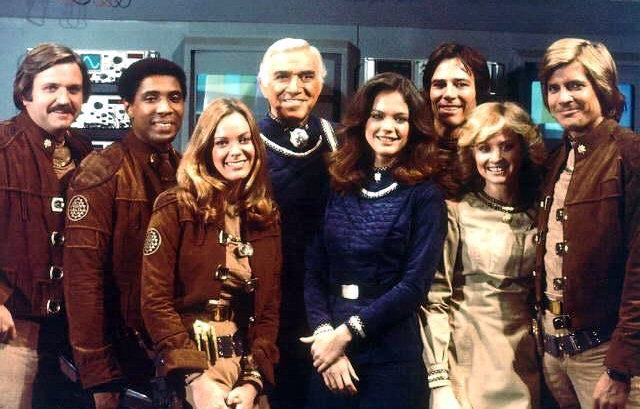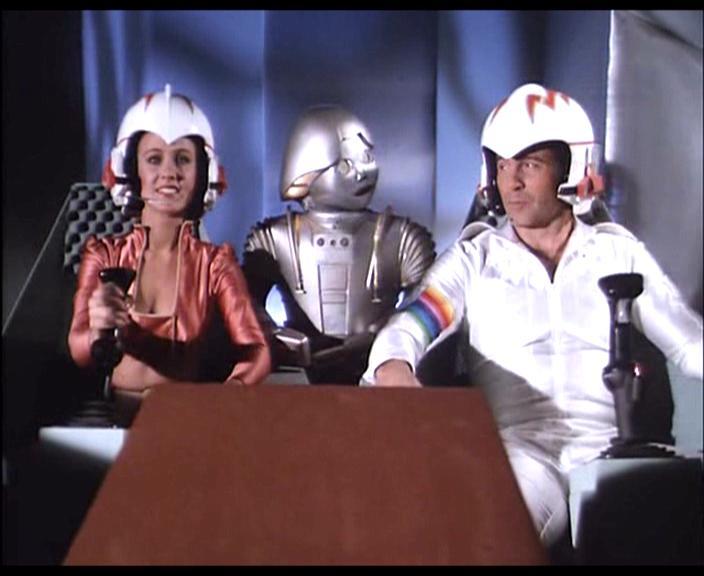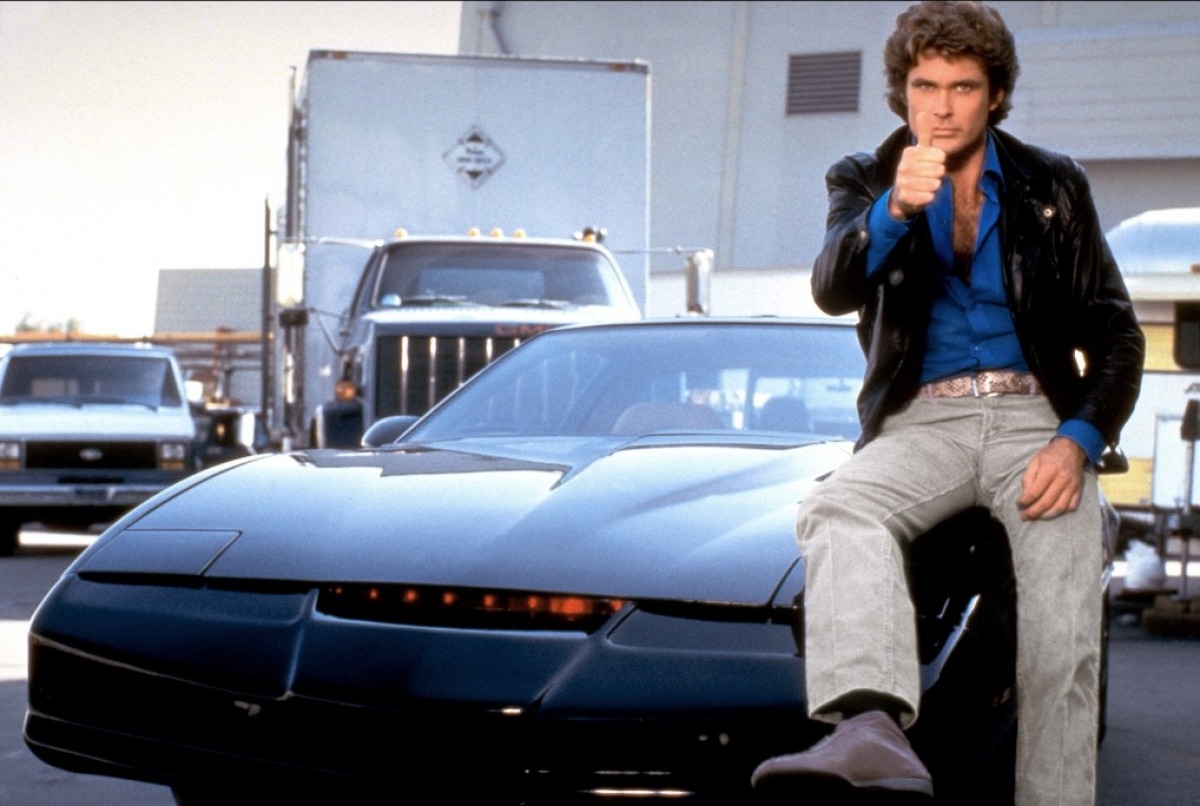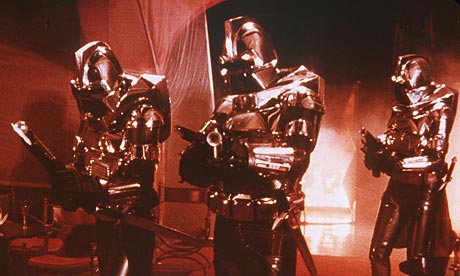Over the weekend, television producer, writer, and behind-the-scenes pop culture taste-maker Glen A. Larson passed away at 77. His surviving legacy is largely his impressive contributions to television. From Knight Rider, to Magnum P.I., to The Six Million Dollar Man to Buck Rogers In the 25th Century, and most famously; Battlestar Galactica, Larson produced and created a serious swath of television candy that we’ve been hooked on for decades.
With exception of Buck Rogers, Larson invented brand new superheroes who lived in his own kind of TV comic book. And just like “real” comic book heroes, all of these stories fronted their narrative with a bunch of color and bravado, which (accidentally or not) obscured dark and unique sets of conflicts. With the original Battlestar Galactica, Larson asserted a premise that was hopeless and more hardcore than Star Wars; humanity nearly succumbs to an extinction instituted by genocidal robots who used to be lizards. And that’s just day one. Throughout the show, the main characters Apollo (Richard Hatch) and Starbuck (Dirk Benedict) would trade just as many cheesy one-liners as they would laser blasts with Cylons, making the horror of all of humanity being wiped out into something of a joke factory.
The classic Cylons on old-school BSG were similarly as ridiculous as Starbuck and Apollo’s personalities. Like the Mummy or Gort, running away from these shambling robots would have been a snap, and if the Cylons hadn’t had spaceships or laser guns, the 12 colonies in BSG would have been just fine. (Sideline: when the new BSG gave the Cylons the ability to look like humans this was just the killer-robot version of slow-zombies becoming fast zombies.)
And yet, BSG—clearly Larson’s baby and passion project—is a perfect microcosm for why his work was so compelling and, arguably, so important. In the 1970’s and 1980’s, television hadn’t become the endless supply of serialized novels we have today. Because of the time Larson lived in, the medium of television meant something else; take fewer risks, at least when it comes to the portrayal of reality. Without being too glib about it, part of the reason why people like contemporary TV and continue to scoff at older TV is because the more TV becomes whatever it’s becoming, the less it looks like the intentionally escapist “cheese,” of the past. We call this kitsch now, but to say BSG was kitsch is a little unfair. Larson wasn’t making Starbuck, Apollo and their robot dog Muffit stupid on accident, or even because he thought they were funny. He did it because it was necessary. In 1978, that’s just how you made television. Dealing with the entire obliteration of the human race? Well, we’re probably going to need some laughs then, too.

We may believe that the Ronald Moore and David Eick “corrected,” or made the ideal version of BSG from 2003-2008, and they probably did, but that’s only because they had a foundation to compare their version against. Meanwhile, back in the 70’s, Larson did create something dark with BSG, but he also made a television show which was incredibly mainstream, even though it didn’t last.
So what did Glen Larson do when BSG was canceled? Well, it’s like he had a backup plan. And though BSG was in production at the same time as Buck Rogers, it’s clear Larson knew he’d need to keep adapting to keep his style of pop-sci-fi on the air. Some have accused Larson of outright ripping off much of his scripting from other TV shows. And even if that’s true (or not) he ripped off himself quite a bit, too. Buck Rogers in the 25th Century isn’t just Battlestar-lite, but also a sort of hodgepodge of every outer-space and action-spy narrative you’ve ever seen. If you like Star Trek, you’ll like this Buck Rogers. If you like Marvel comics, you’ll like it. If you like Batman, well, nearly all the villains from the 1960’s show guest star (as different characters, of course) Plus, the show looks like Battlestar, as Larson repurposed his sets and some of his spaceships to create it. If you were a child of the 80’s, you’d assume the Earth the Galactica would find would be the one of Buck (Gil Gerard), Wilma (Erin Grey), and Mel “Looney Tunes” Blanc as the voice of their hilarious robot Twiki. If the world couldn’t handle BSG, Larson reasoned they could handle someone—comic strip hero Buck Rogers—they’d heard of before. Buck Rogers was more overly bright than Battlestar, and pandered even more directly to the masses, but there was still something inherently weird and sad about it.

Because he’s a man from the 20th century who wakes up in the 25th, Buck Rogers himself is someone who can never, ever go home again. In the super-creepy episode “A Dream of Jennifer,” bad guys convince some poor 25th century woman (Anne Lockhart) to get plastic surgery so she’ll look just like a 20th century woman named “Jennifer” who Buck was really into. Now, this episode plays out with everything pretty much ending up okay (Buck, by the way is much more progressive leading male than Captain Kirk or James Bond, any day of the week) but there’s something really twisted about the whole thing. Buck Rogers is really, really lonely, and the bad guys know that, and use his isolation, and emotional homelessness against him. What? I thought this show was supposed to be fun!
Larson’s thematic obsession with people losing their identity because they’re part of a larger plan or scheme doesn’t stop with Buck Rogers, because it’s the actual premise to Knight Rider. Never forget: the main character (David Hasselhoff) is shot in the face and given a new identity with which he can fight crime. This echoes an even earlier Larson project, Six-Million Dollar Man (Lee Majors) who is so badly mangled in an accident that scientists must turn him into a cyborg. “We can rebuild him,” they say in the opening narration in 1974, which is a little like Glen A. Larson’s style of writing, which in turn echoes how he survived as a writer: cyborg parts from one part of the culture, with narrative parts from another. His particular tendency towards a dark story wrapped in an over-the-top TV show is a weird harbinger of the more serious television which has emerged victorious in the 21st century.

Glen A. Larson is himself a singularly prescient sign for what TV would become after his influence. Larson was aware that these dark twisted themes (is Knight Rider like The Man in the Iron Mask, only reversed?) are physiologically important, but was also aware he could only push this stuff so far. He didn’t want Battlestar Galactica, or Knight Rider to be any darker than they already were because for him, it was already really dark. (Magnum P.I. is mostly dark because of how aggressively happy Tom Selleck is, but whatever.)
Larson wanted his characters to win, he wanted his characters to smile, to chew on cigars, but because he couldn’t help himself, he also either shot them in the face, took away everything they loved, or blew up their entire planet, in the first episode. Glen A. Larson believed in beginning stories with giant bangs, and seeing what characters can do with themselves from there. We’d all be living in a much more boring universe without him, and to paraphrase the opening narration of Battlestar Galactica; we can only hope that there may yet be a version of Glen A. Larson , who even now, writes crazy stories, somewhere beyond the heavens…
Ryan Britt is a longtime contributor to Tor.com and the author of the forthcoming essay collection Luke Skywalker Can’t Read: A New Geek Manifesto (Plume 2015). He lives in New York City.










